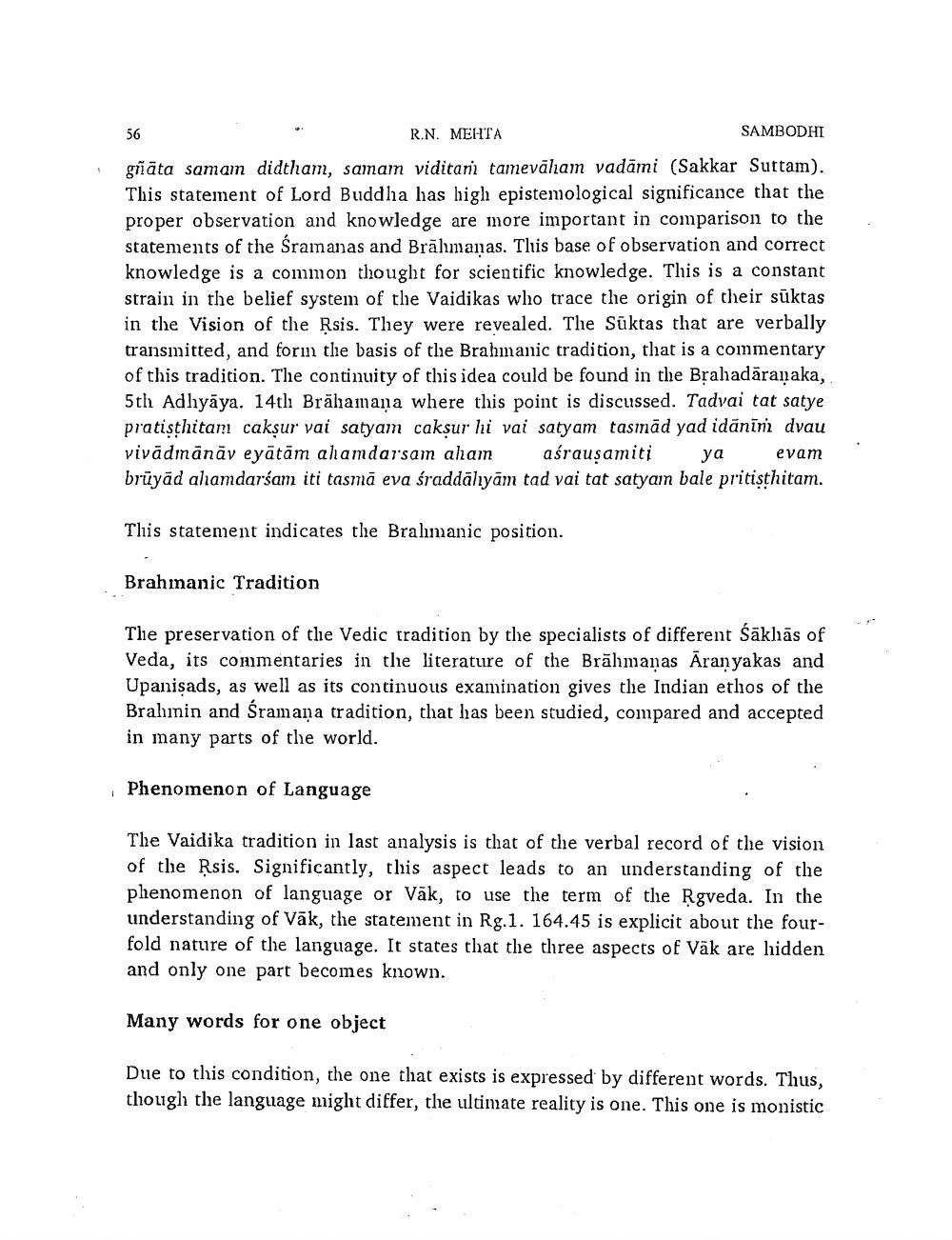________________
R.N. MEHTA
SAMBODHI
gñāta samam didtham, samam viditani tamevāham vadāmi (Sakkar Suttam). This statement of Lord Buddha has high epistemological significance that the proper observation and knowledge are more important in comparison to the statements of the Sramanas and Brālmanas. This base of observation and correct knowledge is a common thought for scientific knowledge. This is a constant strain in the belief system of the Vaidikas who trace the origin of their sūktas in the Vision of the Rsis. They were revealed. The Sūktas that are verbally transmitted, and forin the basis of the Brahmanic tradition, that is a commentary of this tradition. The continuity of this idea could be found in the Bțahadāranaka, 5th Adhyāya. 14tlı Brālamana where this point is discussed. Tadvai tat satye pratisthitani cakşur vai satyam cakşur hi vai satyam tasmād yad idānim dvau vivādmānāv eyātām ahamdarsam alam aśrausamiti ya evam brüyād alamdarśam iti tasmā eva śraddālıyām tad vai tat satyam bale pritisthitam.
Tliis statement indicates the Brahmanic position.
Brahmanic Tradition
Thie preservation of the Vedic tradition by the specialists of different Śäklās of Veda, its commentaries in the literature of the Brāhmaṇas Aranyakas and Upanisads, as well as its continuous examination gives the Indian ethos of the Brahınin and śramana tradition, that has been studied, compared and accepted in many parts of the world.
Phenomenon of Language
The Vaidika tradition in last analysis is that of the verbal record of the vision of the Rsis. Significantly, this aspect leads to an understanding of the phenomenon of language or Väk, to use the term of the Rgveda. In the understanding of Vāk, the statement in Rg.1. 164.45 is explicit about the fourfold nature of the language. It states that the three aspects of Vāk are hidden and only one part becomes known.
Many words for one object
Due to this condition, the one that exists is expressed by different words. Thus, though the language might differ, the ultimate reality is one. This one is monistic




